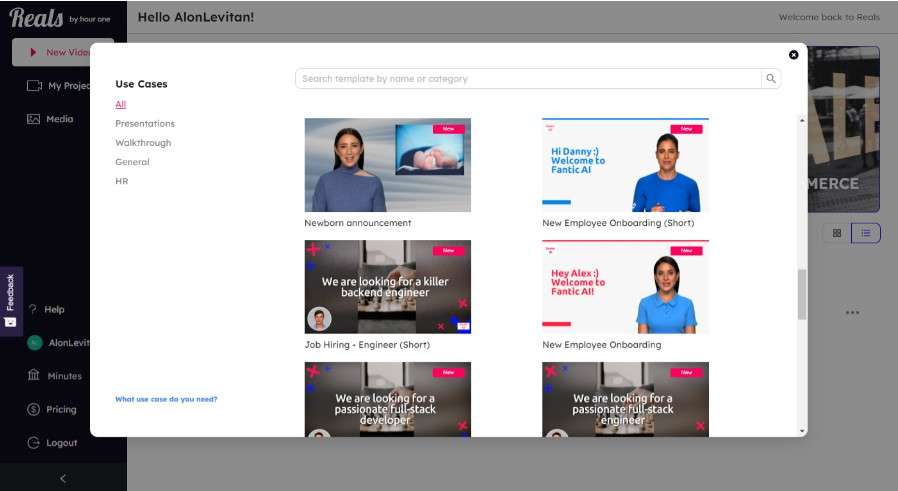Organizations that promote a continuous learning culture enjoy a more knowledgeable, motivated, and versatile workforce. One of the most reliable methods for achieving this is to offer engaging employee development programs on an ongoing basis.
Learning may be valuable for its own sake, but it also has many tangible and measurable benefits. Employees are 76% more likely to stay with an organization that provides continuous learning opportunities. More than a third of workers who quit an organization do so because they feel their career trajectory has stalled out. Employee development programs help your best workers feel confident that they can expand their skillset and advance their career goals while sticking with your company.
A big challenge for employers is keeping employee development engaging and relevant. Programs soon feel stale if they aren’t updated regularly with fresh content. Even the most enriching material can fail to hold a learner’s attention if the presentation is dull. You don’t want employees to miss out on educational benefits because the programs are boring, so to keep things interesting, here are ten innovative ideas for employee development.
What is Employee Development?
Employee development is the practice of providing employees with skills and knowledge that advance their professional development in alignment with the organization’s goals. It is usually offered through Human Resources as part of a larger Learning & Development strategy.
Courses that teach communication, wellness, leadership, advanced software features, and other hard or soft skills would fall under this category. Mandatory training limited only to the skills necessary for the employee’s current role would not be considered employee development.
What are the benefits of Employee Development?
The goal of employee development is to help employees perform more effectively in various situations, not just the job they’re currently doing. For employers, the primary benefit of a successful employee development program is that their workers will perform better in the short term and in any potential future positions.
Employee development should also open doors for employees by providing them with skills that qualify them for new positions or supervisory roles. It can help you retain your top employees, as more than nine out of ten workers report that they’re much more willing to stay with a company that invests in their career growth.
Employee development programs can also help businesses attract new talent by helping to foster a company culture that promotes diversity, wellness, learning, and other positive values.
What are the essential Employee Development areas?
The most effective way to run an employee development program is to follow a plan that covers transferable skillsets across a broad range of topics:
- Leadership – management skills, strategic planning, mentoring
- Communication – conflict resolution, collaboration, public speaking
- Creativity – brainstorming, critical thinking, pattern identification
- Organization – time management, prioritization, scheduling)
- Flexibility – cross-training, knowledge sharing, improvisation
In addition to the areas listed above, a good employee development program can also include topics that promote health and wellness, such as fitness, mindfulness, stress management, and even personal finances.
10 Innovative Ideas for Employee Development
1. A Great Onboarding Experience
First impressions are everything, and the onboarding experience will set the employee’s expectations for the educational programs you offer them in the future. It can also significantly impact their relationship with your organization. A strong onboarding program makes new hires 69% more likely to stay with a company for at least three years.
2. Development Days
Many workers would love to focus on their professional development, but they’re too busy with their core job duties during the day to spend time on optional educational programs. Employers can easily solve this problem by giving employees a certain amount of paid hours (or days) to allow them the time to learn new skills.
3. Gamification
Leaderboards, prizes, and other gamifying elements can keep coursework fun and create team-building opportunities along the way. Eight out of ten workers report that gamification makes learning more engaging. Companies that tried it have found that gamified learning programs can increase productivity by as much as 50%.
4. Learn Problem-Solving Skills
Technologies, marketplaces, and even culture itself are changing faster than ever before, and today’s workers need to be able to adapt to the unpredictable. Some of the most beneficial courses are the ones that teach employees how to analyze problems, approach them creatively, and think their way through to innovative solutions.
5. Reverse Mentorship
Mentoring programs can be incredibly effective for transferring knowledge and strengthening relationships within your organization. In addition to the traditional approach of having experienced employees take new hires under their wing, consider reverse mentoring. In reverse mentoring, new or junior employees share their outside experience and perspective with senior employees or management.
6. Use AI Video-Generated Walkthroughs as Teaching Tools
Large organizations often struggle to provide large amounts of up-to-date training content at scale. AI video generators like Hour One solve this problem by allowing you to convert plain text into presenter-led video almost instantaneously. They allow you to quickly produce walkthroughs and other educational videos for various languages and use cases, and they can be updated as often as needed at virtually no cost. Video is proven to increase knowledge retention when used as a training tool while offering cost and time savings.
7. Upgrade Presentation Skills
Confidently speaking in public and presenting is helpful in a wide range of professional situations. Many people get nervous about giving a speech or presentation, but classes on this subject can quickly provide the essential skills that instill confidence and dispel fears. Presentation skills are necessary for employees who want to move up to leadership positions someday.
8. Shadowing
You can’t get much more direct and hands-on than shadowing for cross-training and teaching organization-specific skills. By allowing learners to follow another employee through the day and observe their work, you can train while simultaneously improving interdepartmental relationships.
9. Microlearning
Like it or not, we’re all in the habit of scrolling through content quickly, watching short clips, and rapidly moving on. Educational content sticks better when delivered at the pace of our lives, in bite-size chunks of about two to ten minutes per lesson. According to some studies, microlearning is 17% more efficient than traditional educational methods.
10. Lunch and Learns
Another way to give time-crunched employees more chances to participate in your educational programs is to offer events where they can eat lunch while listening to an informative lecture or presentation. Lunch and learns can be a good opportunity for people within the organization to share their expertise, but you can also bring in guest speakers.
AI Video Generators Make Continuous Learning More Accessible
Employee development programs are the best way to show your workers that you’re fully committed to investing in their careers, but it’s not enough for the program to simply exist. You’ve got to make it engaging and accessible–and sometimes that requires a creative, outside-the-box approach.
A robust Learning & Development strategy needs to account for the impact of content and media formats. Video is one of the most effective formats for learning. It can be a key element in microlearning, walkthroughs, and other engaging educational methods, but it can be expensive to produce unless you can generate it on-demand with AI technology. Sign up for Hour One to see how an AI video generator can support your innovative ideas for employee development without putting you over your budget.
Summary:
Employee development programs increase productivity and employee retention, making them an essential part of any Learning & Development strategy. To keep employee development engaging, we’ve suggested ten innovative ideas: A Great Onboarding Experience, Development Days, Gamification, Learn Problem Solving Skills, Reverse Mentorship, Use AI Video Generated Walkthroughs as Teaching Tools, Upgrade Presentation Skills, Shadowing, Microlearning, and Lunch and Learns. You can use Hour One’s AI video generator to support several innovative employee development ideas.













